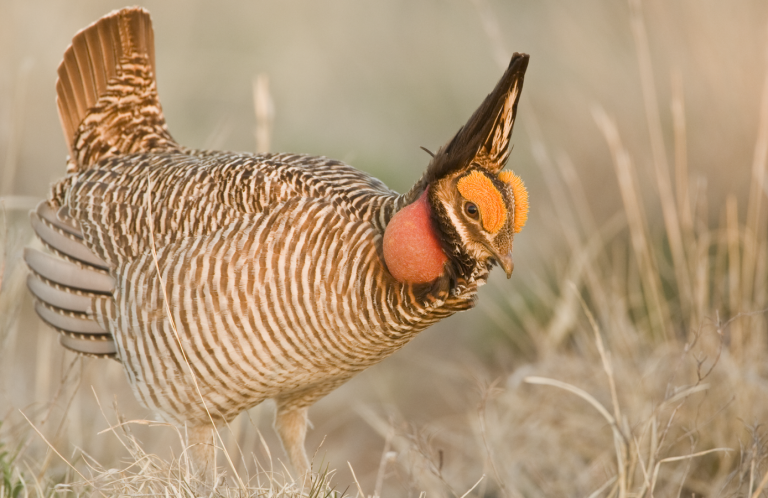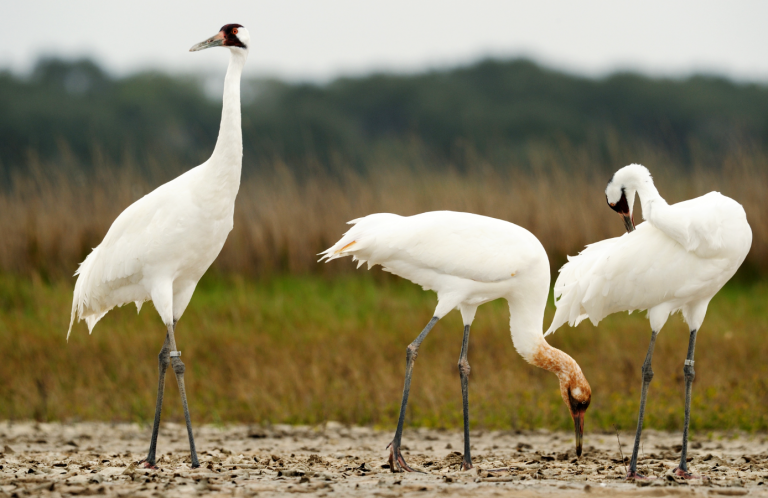Petition Urges Federal Protections for Eastern Golden Eagle

Today, American Bird Conservancy (ABC) filed a petition with the U.S. Fish and Wildlife Service (USFWS) requesting a Threatened or Endangered listing for the Eastern Golden Eagle under the Endangered Species Act (ESA). Persistent threats and a slow reproductive rate coupled with a small population are raising red flags for conservationists.
“The Golden Eagle is a widely recognized icon of North America's western landscapes. Many people are surprised to learn that there is also a subpopulation of Golden Eagles in the East,” said Michael J. Parr, President of ABC. “But this population is threatened. With a host of hazards, including the growing threat of improperly sited wind energy development, the Eastern Golden Eagle needs immediate attention.”
Elusive and rare, Eastern Golden Eagles are easily overlooked. Yet these complex birds are an important part of eastern ecosystems. According to the best available science, the current population is roughly 5,000 individuals. However, there is limited data on population trends and uncertainty as to whether this population is stable.
Unlike western birds that are more associated with open habitats, Eastern Golden Eagles spend much of their time in forested landscapes along the Appalachian Mountains. Eastern eagles also have a distinct breeding, migratory, and wintering range as compared to western birds. The core of their range spans from Georgia, Tennessee, and North Carolina through the mid-Atlantic region, including West Virginia, Virginia, Maryland, and Pennsylvania, and extending northward into parts of New York, Vermont, New Hampshire and Canada.
In the early 1900s, Golden Eagles across the country were widely persecuted, and the harmful effects of the pesticide DDT contributed to population declines in subsequent decades. Thanks to environmental legislation, conservation efforts, and the banning of DDT, Golden Eagle populations increased in the latter portion of the 20th century. Unfortunately, today's eastern population faces many growing threats, including collisions with vehicles and wind turbines, electrocution from energy infrastructure, incidental trap mortality, illegal recreational shooting, and poisoning from lead and other toxins.
“Wind energy development is a growing problem for Eastern Golden Eagles. Energy infrastructure that's not properly planned and sited along their migratory path has the potential to cause population declines,” said Lewis Grove, Director of Wind and Energy Policy at ABC. “Given the species' unique susceptibility to collisions with wind turbines, ABC urges the industry to conduct detailed assessments where these and other protected birds will likely be impacted.”
“Golden Eagles in the eastern flyway have much higher rates of lead poisoning than their western cousins, often leading to sickness and death,” said Hardy Kern, ABC's Director of Government Relations. “Lead ammunition fragments upon impact, which means scavenging birds like eagles are exposed when they eat carcasses or gut piles from animals taken with lead shot. Because of its impact on eagles, condors, and other declining bird species, ABC continues to encourage hunters to use only non-lead shot.”
Another concern is that Golden Eagles generally do not reach sexual maturity for at least four years. Combined with their small brood size of one to three eggs, the long maturation period means that Eastern Golden Eagle populations can be slow to recover from declines.
Many of these birds breed in Quebec, Canada. Currently, Eastern Golden Eagles are not known to nest in the United States. The last documented nesting attempt by naturally occurring birds in the eastern U.S. was in Maine in 1996. Genetic analysis indicates that the eastern population is genetically distinct from other breeding populations of Golden Eagles in the U.S. Given the lack of mixing with western birds, a decline to this small population could quickly spiral into its extirpation.
“In light of all the threats and challenges to the birds, ABC believes that USFWS should designate the eastern population of the Golden Eagle as Endangered or Threatened,” said Grove. “ESA listing offers the best chance to protect this unique species' habitat and prevent a decline that would be difficult to reverse.”
ABC supports wind energy development when it is bird-smart, and welcomes opportunities to collaborate on effective strategies. Wind energy developers, consultants, and resource management agencies are encouraged to use ABC's Wind Risk Assessment Map as a tool to inform Bird-Smart Wind Energy development.
###
American Bird Conservancy (ABC) takes bold action to conserve wild birds and their habitats throughout the Americas. Inspired by the wonder of birds, we achieve lasting results for the bird species most in need while also benefiting human communities, biodiversity, and the planet's fragile climate. Our every action is underpinned by science, strengthened by partnerships, and rooted in the belief that diverse perspectives yield stronger results. Founded as a nonprofit organization in 1994, ABC remains committed to safeguarding birds for generations to come. Join us! Together, we can do more to ensure birds thrive.
Media Contact
Jordan Rutter
Director of Communications
media@abcbirds.org


















































